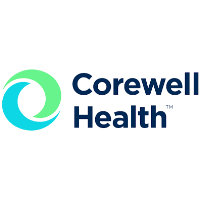Not so fun fact: Shoveling snow for just ten minutes involves lifting and throwing nearly one ton of frozen precipitation, according to a newly published analysis from Corewell Health William Beaumont University Hospital. This finding and others further distinguishes snow shoveling as a significant risk factor for acute cardiac events in sedentary men.
Led by Barry Franklin, Ph.D., director (emeritus) of Cardiac Rehabilitation and Preventive Cardiology, the review examines the physiological demands of snow shoveling and how it contributes to a higher incidence of heart attack and sudden cardiac death following major snowfalls.
Published in the March 2025 issue of Mayo Clinic Proceedings, the perspective offers important safety guidelines for winter snow removal.
"Snow shoveling can create the perfect storm of simultaneous cardiovascular stressors," Dr. Franklin said. "Our previous research and recent review show that this common winter activity can place extraordinary demands on the heart, particularly for men who may be habitually sedentary and have underlying cardiovascular disease."
Findings:
- Heart rates during just 10 minutes of heavy snow shoveling exceed recommended exercise intensity limits, averaging 97% of the maximum heart rate attained during treadmill testing.
- Following two heavy snowfalls in the Detroit area, researchers identified 36 sudden cardiac deaths during snow removal; 33 of the fatalities were men.
- The combination of exposure to cold air and physical exertion can significantly increase heart rate and blood pressure while simultaneously reducing blood flow to the heart.
Factors in combination with snow shoveling found to place significant demand on the heart:
- Working in an upright posture, especially when the legs are frequently motionless
- Holding one’s breath while straining to lift heavy loads
- Being exposed to and inhaling cold air
- Early morning shoveling coincides with the time of day when there is a heightened risk for heart attack
For safer snow removal, authors recommend the following:
- Avoid manual snow removal if you are habitually sedentary
- Use a snow thrower instead of a shovel whenever possible
- Push snow rather than lifting and throwing it
- Take frequent short breaks
- Wear a breathing mask or scarf to warm the air you inhale and protect your face and neck from the cold
- Avoid heavy meals, alcohol and tobacco before and after shoveling
- Dress in several light layers so that you can remove or add layers if you get too warm or cold
- Wear a hat to avoid heat loss
- Stop shoveling if you experience chest discomfort, unusual shortness of breath, lightheadedness or nausea.
The review emphasized that automated snow removal methods, such as using a snow thrower, require less than half the energy of manual shoveling and are associated with lower heart rates and blood pressure responses, thus making them a safer alternative.
About Corewell Health™
People are at the heart of everything we do, and the inspiration for our legacy of outstanding outcomes, innovation, strong community partnerships, philanthropy and transparency. Corewell Health is a not-for-profit health system that provides health care and coverage with an exceptional team of 65,000+ dedicated people—including more than 12,000 physicians and advanced practice providers and more than 16,000 nurses providing care and services in 21 hospitals, 300+ outpatient locations and several post-acute facilities—and Priority Health, a provider-sponsored health plan serving more than 1.3 million members. Through experience and collaboration, we are reimagining a better, more equitable model of health and wellness. For more information, visit corewellhealth.org.









